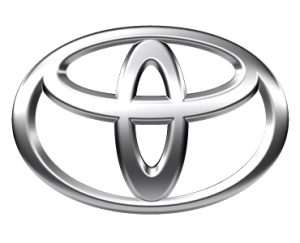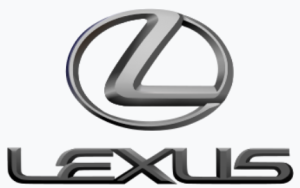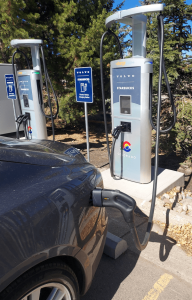One source for information about public EV chargers in North America is the Department of Energy’s Alternative Fuels Data Center. You can apply various filters in a search for EVSEs (blog article). As of October 26, 2023 here are the numbers that you get.
|
|
locations |
plugs |
| A |
NACS fast DC |
2193 |
23977 |
| B |
CCS1 fast DC |
7420 |
14879 |
| C |
CHAdeMO fast DC |
6478 |
9743 |
| D |
NACS level 2 |
4971 |
11937 |
| E |
J-plug level 2 |
58140 |
126712 |
A first thing to keep in mind is that “level 2” in this context (rows D and E) represents very slow charging. These chargers might be at hotels, where you can charge while you sleep. Row D is mostly what Tesla calls “destination chargers”. Yes, row E has some really big numbers. But these chargers are not interesting for people who are contemplating cross-country drives, because they are so slow.
Row A is what we call “Tesla superchargers”. These are the chargers that are almost never broken. If one of them stops working, generally it gets repaired almost instantly. These are the chargers that are located along all of the interstate highways in the US, so that you can safely embark on a cross-country drive without range anxiety.
Row B can be thought of, roughly, as “non-Tesla fast chargers”. It is commonplace to go to one of these charging locations and to find that one plug is broken, or maybe more than one. It is commonplace to identify some place that you might drive a non-Tesla car and none of these row-B chargers can be found in that area. This sorry state of affairs for row B is the chief reason that so many car makers have joined the NACS charging plug club (canonical list).
Row C has a foot in the grave. There was a time when CHAdeMO plugs looked like maybe they had a future in North America, but that time is past. No new cars sold in the US use CHAdeMO plugs.
Yet another thing to keep in mind is that this information from the Department of Energy’s Alternative Fuels Data Center is surely never quite up to date. No matter how hard the DOE tries to keep this information up to date, there are probably big information gaps and non-negligible reporting delays from the operators of charging stations. The reader is invited to take these AFDC numbers as general indicators of trends, and not as exact numbers.
What goes unmentioned in the numbers in this table is that, now, and in the future, most EV charging for most EV owners is going to happen at home. Yes, of course there are many would-be EV owners who would never be able to charge at home — some people can only park their car on the street, for example. And some live in apartments or other multi-tenant situations where there is no meaningful opportunity to install one’s own EV charger. The problem of would-be EV owners who cannot possibly charge at home is a big problem and will not be meaningfully remedied any time soon. But the plain fact is, right now in 2023, most EV charging that happens, happens at home.






 Jaguar announced on September 21, 2023 that Real Soon Now, all of its newly manufactured electric vehicles will have a Tesla-style charging port located at the left rear corner of the vehicle.
Jaguar announced on September 21, 2023 that Real Soon Now, all of its newly manufactured electric vehicles will have a Tesla-style charging port located at the left rear corner of the vehicle. Genesis has announced that Real Soon Now, all of its newly manufactured electric vehicles will have a Tesla-style charging port located at the left rear corner of the vehicle.
Genesis has announced that Real Soon Now, all of its newly manufactured electric vehicles will have a Tesla-style charging port located at the left rear corner of the vehicle. Kia has announced that Real Soon Now, all of its newly manufactured electric vehicles will have a Tesla-style charging port located at the left rear corner of the vehicle.
Kia has announced that Real Soon Now, all of its newly manufactured electric vehicles will have a Tesla-style charging port located at the left rear corner of the vehicle.